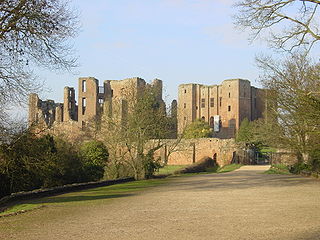
The Dictum of Kenilworth, issued on 31 October 1266, was a pronouncement designed to reconcile the rebels of the Second Barons' War with the royal government of England. After the baronial victory at the Battle of Lewes in 1264, Simon de Montfort took control of royal government, but at the Battle of Evesham the next year Montfort was killed, and King Henry III restored to power. A group of rebels held out in the stronghold of Kenilworth Castle, however, and their resistance proved difficult to crush.

Year 1266 (MCCLXVI) was a common year starting on Friday of the Julian calendar.
The Battle of Evesham was one of the two main battles of 13th century England's Second Barons' War. It marked the defeat of Simon de Montfort, Earl of Leicester, and the rebellious barons by the future King Edward I, who led the forces of his father, King Henry III. It took place on 4 August 1265, near the town of Evesham, Worcestershire.

Earl of Derby is a title in the Peerage of England. The title was first adopted by Robert de Ferrers, 1st Earl of Derby, under a creation of 1139. It continued with the Ferrers family until the 6th Earl forfeited his property toward the end of the reign of Henry III and died in 1279. Most of the Ferrers property and the Derby title were then held by the family of Henry III. The title merged in the Crown upon Henry IV's accession to the throne in 1399.
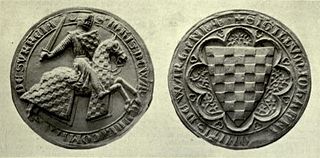
John de Warenne, 6th Earl of Surrey was a prominent English nobleman and military commander during the reigns of Henry III of England and Edward I of England. During the Second Barons' War he switched sides twice, ending up in support of the king, for whose capture he was present at Lewes in 1264. Warenne was later appointed as "warden of the kingdom and land of Scotland" and featured prominently in Edward I's wars in Scotland.
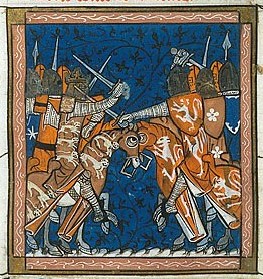
The Second Barons' War (1264–1267) was a civil war in England between the forces of a number of barons led by Simon de Montfort against the royalist forces of King Henry III, led initially by the king himself and later by his son, the future King Edward I. The barons sought to force the king to rule with a council of barons, rather than through his favourites. The war also involved a series of massacres of Jews by de Montfort's supporters, including his sons Henry and Simon, in attacks aimed at seizing and destroying evidence of baronial debts. To bolster the initial success of his baronial regime, de Montfort sought to broaden the social foundations of parliament by extending the franchise to the commons for the first time. However, after a rule of just over a year, de Montfort was killed by forces loyal to the king at the Battle of Evesham.
Nicholas of Ely was Lord Chancellor of England, Bishop of Worcester, Bishop of Winchester, and Lord High Treasurer in the 13th century.
Walter of Guisborough was a canon regular of the Augustinian Gisborough Priory, Yorkshire and English chronicler of the 14th century. His chronicle has historical importance.
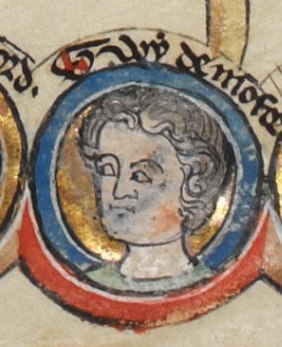
Guy de Montfort, Count of Nola (1244–1291) was the son of Simon de Montfort, 6th Earl of Leicester and Eleanor of England.
Philip Stanhope, 1st Earl of Chesterfield was an English nobleman, aristocrat and royalist, who was created the first Earl of Chesterfield by King Charles I in 1628.

Dipold, known in German as Diepoldvon Schweinspünt, was a German ministerialis who was raised to the Duchy of Spoleto in 1209. Of Bavarian origin, he was a reputed younger son of Berthold II of Vohburg and Adelaide of Ballenstedt. He was originally a vassal of the count of Lechsgemünd. His career in the Mezzogiorno was marked by continual raids and sieges, battles, and sacks recounted in exhaustive detail by Richard of San Germano, a monk of the abbey whose lands were especially hard hit.

Henry de Beaumont, jure uxoris 4th Earl of Buchan and suo jure 1st Baron Beaumont, was a key figure in the Anglo-Scots wars of the thirteenth and fourteenth centuries, known as the Wars of Scottish Independence.
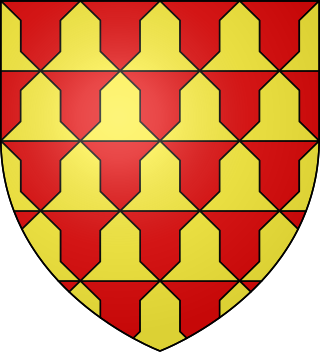
Robert de Ferrers, 6th Earl of Derby (1239–1279) was an English nobleman.
Events from the 1260s in England.
Roger Godberd was a medieval outlaw who has been suggested as a possible historical basis for the legend of Robin Hood. Some have suggested his life was the inspiration for the story of Robin Hood, though there is no solid evidence supporting this claim. Godberd’s criminal history is often compared with the Robin Hood legend since some minor details align with the famous story.

The siege of Kenilworth, also known as the great siege of 1266, was a six-month siege of Kenilworth Castle and a battle of the Second Barons' War. The siege was a part of an English civil war fought from 1264 to 1267 by the forces of Simon de Montfort against the Royalist forces led by Prince Edward. The siege was one of few castle attacks to take place during the war.
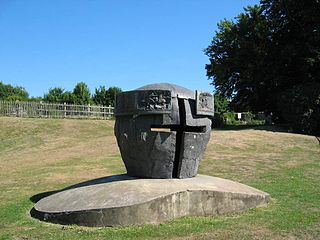
The Mise of Lewes was a settlement made on 14 May 1264 between King Henry III of England and his rebellious barons, led by Simon de Montfort. The settlement was made on the day of the Battle of Lewes, one of the two major battles of the Second Barons' War. The conflict between king and magnates was caused by dissatisfaction with the influence of foreigners at court and Henry's high level and new methods of taxation. In 1258 Henry had been forced to accept the Provisions of Oxford, which essentially left the royal government in the hands of a council of magnates, but this document went through a long series of revocations and reinstatements. In 1263, as the country was on the brink of civil war, the two parties had agreed to submit the matter to arbitration by the French king Louis IX. Louis was a firm believer in the royal prerogative, and decided clearly in favour of Henry. The outcome was unacceptable for the rebellious barons, and war between the two parties broke out almost immediately.
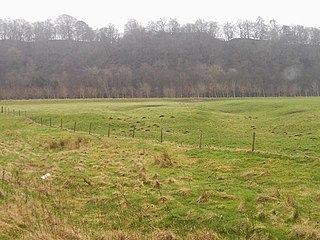
Liddel Strength is an ancient monument near Carwinley, Cumbria, in northwest England. It consists of the earthwork remains of an Anglo-Norman border fortification destroyed by the Scots in 1346 and fragmentary remains of a pele tower subsequently built upon the site. It lies on a cliff on the south bank of the Liddel Water, overlooking the Liddel Water's confluence with the River Esk; the last high ground before the Esk reaches the Solway Plain. The Liddel Water and the Esk (downstream) form the modern Anglo-Scottish border; formerly they were the southern boundary of the Debatable Lands.
In the summer of 1242, a Mongol force invaded the Latin Empire of Constantinople. This force, a detachment of the army under Qadan then devastating Bulgaria, entered the empire from the north. It was met by the Emperor Baldwin II, who was victorious in a first encounter but was subsequently defeated.

The Libellus de expugnatione Terrae Sanctae per Saladinum, also called the Chronicon terrae sanctae, is a short anonymous Latin account of the conquests of Saladin in the Holy Land between 1186 and 1191. The core of the text was written shortly after the events it describes and then supplemented by the addition of an account of the Third Crusade early in the thirteenth century. This probably took place at Coggeshall Abbey in England. Neither the original author nor the continuator/compiler is known by name.












